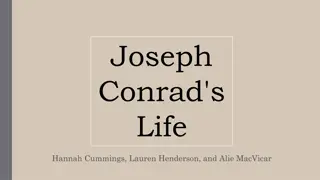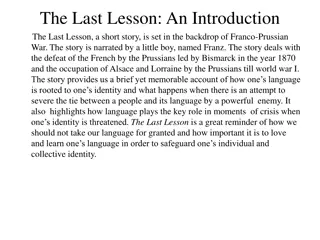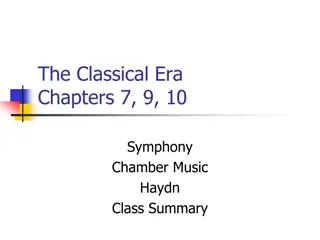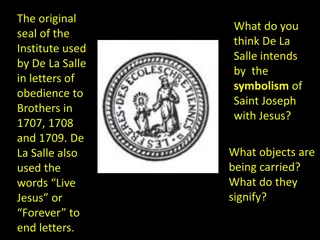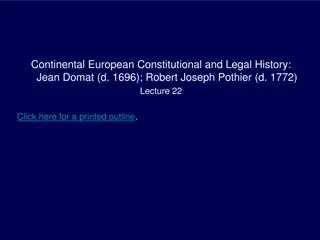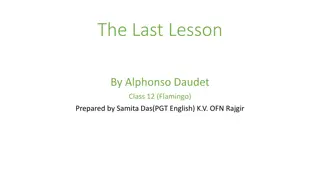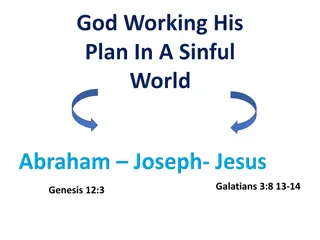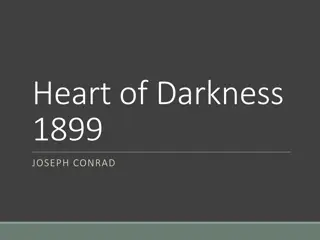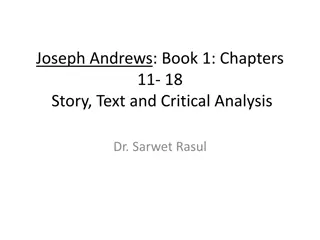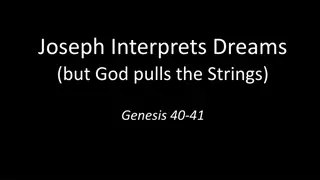The Life and Works of Franz Joseph Haydn
Born in 1732 in Austria, Franz Joseph Haydn was a prolific composer known for his symphonies and contributions to classical music. His Symphony No. 92 in G major, known as the Oxford Symphony, is celebrated for its musical brilliance. Explore his life, accomplishments, and classroom activities related to understanding music dynamics through engaging activities.
Download Presentation

Please find below an Image/Link to download the presentation.
The content on the website is provided AS IS for your information and personal use only. It may not be sold, licensed, or shared on other websites without obtaining consent from the author. Download presentation by click this link. If you encounter any issues during the download, it is possible that the publisher has removed the file from their server.
E N D
Presentation Transcript
FRANZ JOSEPH HAYDN Born: March 31, 1732 Died: May 31, 1809
Biography Born March 31, 1732 in Rohrau, Austria Age 6, moved away from his parents to live with a relative in order to receive quality music training that he could not receive in Rohrau Age 8, joined the Choir school of St. Stephen s Cathedral in Vienna to learn violin, keyboard, and voice Age 29, he was named Kapellmeister, or court musician for the Esterhazy family and held this position for 30 years He wrote 106 symphonies and became the principal engineer of the classical style and inventor of the string quartet. He passed away in Vienna, Austria in 1809 after an extended illness
Featured Work: Symphony no. 92 in G major, Oxford / Letter Q mvt. IV. Presto Haydn s Symphony No. 92 is considered by many to be one of the greatest musical compositions ever written It was famously performed in 1791 at Oxford University, Haydn received an honorary doctorate degree and was given the nickname Oxford This symphony helped Haydn rise to fame in London Students will likely recognize Oxford as the site where many scenes from Harry Potter were filmed. The fundamental of music focused on in this piece is dynamics: the volume of the composition
Classroom Activity #1 Dynamics- show this video as a review of what dynamics are Dynamics song Make copies of the dynamics documents listed in the symphony workbook Discuss what movements could correspond with each dynamic marking. Lead children to understand that big movements correspond with loud music and small movements correspond with quiet music Break the class into four groups, assigning each group a different dynamic marking Students will create movements that represent that dynamic assigned Students will share their movements while one student plays the steady beat on a drum corresponding with the dynamic level given. After sharing their movements, students will teach their movements to the class. Assess by playing the steady beat for the class using different dynamic markings and as a class have students perform the movement that corresponds with each
Classroom Activity #2 Haydn video Oxford video Review the movements created for the different dynamic markings Play the symphony for the students, stop at the large dynamic shifts and identify which dynamic marking is heard Play the symphony again and have the students move to correspond with the dynamics heard
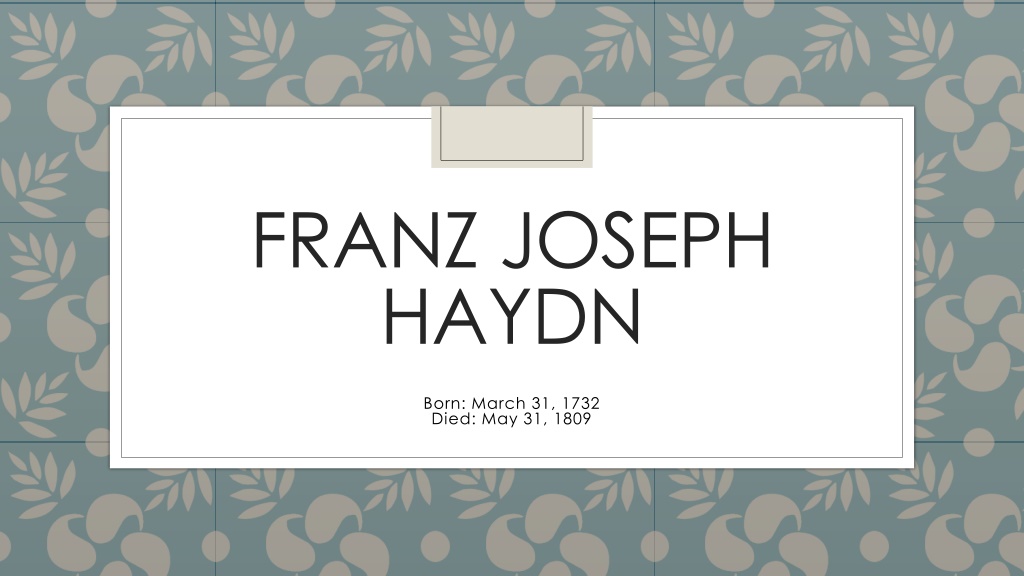
 undefined
undefined








